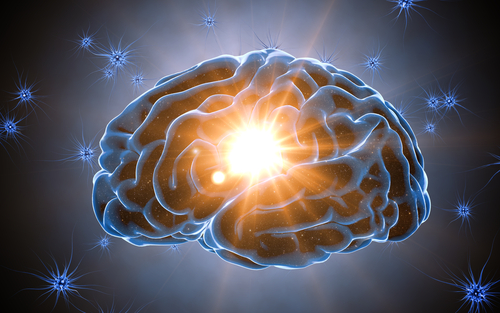Loud, Startling Sounds Can Decrease Parkinson’s Muscle Stiffness, Study Suggests

Loud and alarming sounds can reduce muscle stiffness in Parkinson’s disease patients treated with subthalamic nucleus deep brain stimulation (STN-DBS), a study suggests.
The study, “Influence of alarming auditory cues on viscoelastic stiffness of skeletal muscles in patients with Parkinson’s disease,” was published in Clinical Biomechanics.
Almost 100 years ago, a French neurologist described a phenomenon called paradoxical kinesis (meaning “difficult to understand movement”) consisting of a dramatic but temporary reversal of Parkinson’s motor symptoms in the face of startling situations such as an oncoming car or loud sounds.
“The phenomenon of [paradoxical kinesis] suggests the existence of neural systems that can override parkinsonian impairment in certain conditions,” the researchers wrote in this study.
The association between paradoxical kinesis and muscular rigidity has never been described, probably due to the subjective, observer-dependent scoring methodology while performing clinical assessments of “rigidity during the transitory motor alterations” and also due to the “subjective nature of the examinations according to the Unified Parkinson’s Disease Rating Scale (UPDRS),” according to the researchers.
Increased rigidity has been linked to more viscoelastic stiffness of skeletal muscles. Muscles behave like springs, and while something that is elastic immediately returns to its original shape once a stress has been removed, a tissue that is viscous will deform permanently. Therefore, viscoelasticity refers to the muscle having properties of both, allowing it to slowly recover from being stretched or deformed.
The Parkinson’s Disease News Today forums are a place to connect with other patients, share tips and talk about the latest research. Check them out today!
Measurement of muscle tone using a myotonometer — a device that measures viscoelastic characteristics of soft tissues — has proved useful in quantifying the effect of therapeutic interventions on rigidity in Parkinson’s patients.
“Thus, evaluation of viscoelastic stiffness could potentially enable quick and reliable measurements of muscular rigidity during the enhancement of motor performance due to external cues in patients with [Parkinson’s disease],” the researchers wrote.
The team from the University of Tartu in Estonia assessed the effect of alarming auditory signals on viscoelastic stiffness of skeletal muscles in patients treated with STN-DBS — a surgical treatment for Parkinson’s disease that involves implanting a device to stimulate targeted regions of the brain with electrical impulses generated by a battery-operated neurostimulator. Patients can use a handheld controller to turn the DBS system on and off.
The team recruited 10 advanced stage Parkinson’s disease patients (three women and seven men) who had been treated with STN-DBS for approximately 4.5 years prior to the study.
Eight subjects had akinetic-rigid (i.e., slowness of movement accompanied by muscle stiffness), and two had the tremor-dominant subtype of Parkinson’s disease. Ten age- and gender-matched healthy individuals were also recruited to use as controls.
Using a myotonometer, the investigators measured the viscoelastic stiffness of the participants’ wrist skeletal muscles, or in other words, the muscle’s resistance to the force that changes its shape, after one night of Parkinson’s medication withdrawal.
Wrist examinations were performed by two different examiners, 10 times each. Measurements were repeated and compared during the DBS-on and DBS-off periods, with and without auditory alarming signals.
Compared with the DBS-off period, muscular stiffness was significantly reduced in the DBS-on phase, supporting the the effectiveness of the stimulation treatment in lessening one of Parkinson’s motor features.
In addition, wrist stiffness was also significantly decreased during the DBS-off period in the presence of alarming auditory signals.
“The mean values of stiffness during the DBS-on phase were lower than during the DBS-off with [alarming auditory] signals phase but the difference was not significant,” the researchers wrote.
Exposure to loud sounds did not change muscle stiffness in the control sample, suggesting that the paradoxical kinesis phenomenon is more pronounced in Parkinson’s patients.
“According to our data, the changes in muscular rigidity due to [alarming auditory] signals are an exclusive characteristic of the patients with [Parkinson’s disease],” the researchers said.
Further larger-scale research is necessary to confirm this study’s findings and assess the efficacy of auditory cueing in Parkinson’s disease.






